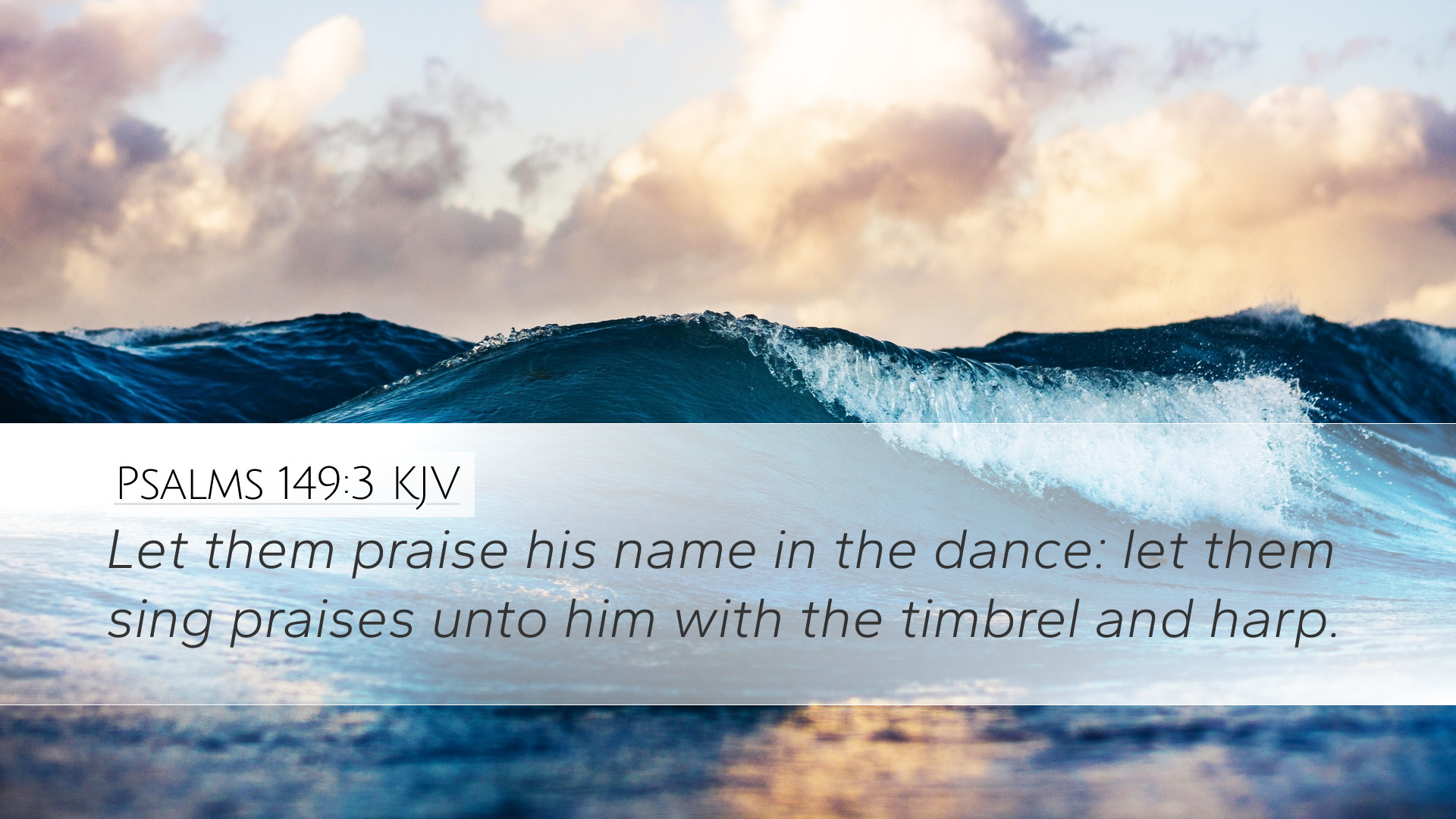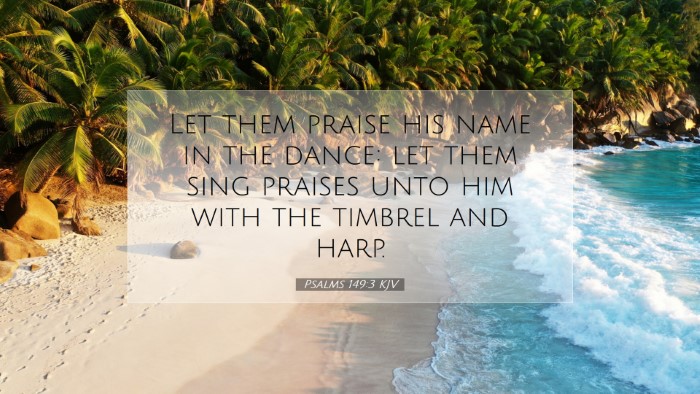Psalms 149:3 Commentary
Verse: "Let them praise his name in the dance: let them sing praises unto him with the timbrel and harp."
Introduction
This verse invites the people of God to engage in joyful worship through music and dance. The Psalmist emphasizes the exuberance and celebration that should characterize the praise offered to the Lord. Public domain commentaries provide valuable insights into the significance of this verse and its implications for worship.
Overall Themes
- The Nature of Worship: Worship should be an expression of joy.
- The Use of Instruments: Musical instruments play a vital role in corporate worship.
- Movement in Worship: Dance symbolizes freedom and unrestrained praise.
- Community Praise: This call to worship reflects a collective response of the faithful.
Insights from Commentators
Matthew Henry:
Henry emphasizes that the posture of worship is vital and notes that "dancing" represents the joy and gladness that should fill the hearts of the faithful when they focus on God's greatness. He also stresses that the act of praising in dance indicates enthusiasm and love for God, which ought to manifest in lively worship practices.
Albert Barnes:
Barnes comments on the context of original celebrations in Israel, where music and dance were essential in religious observances. He highlights that these elements serve to enliven and enrich the worship experience, reflecting both individual and communal expressions of divine praise. According to Barnes, the timbrel and harp symbolize the full range of musical expression offered to God.
Adam Clarke:
Clarke articulates the idea of worship as a holistic act that involves the body, soul, and spirit. The engagement of the body through dance, as well as the use of instruments, brings a dimension of physicality to worship. Clarke also remarks on the timbrel and harp’s symbolic significance, representing harmony and celebration within the community of believers. He infers that such acts of worship bring believers closer to God, enhancing their awareness of His presence.
Application for Worshipers
This verse challenges contemporary worshipers to reconsider how joy is displayed in their expressions of faith. The integration of music and movement can help cultivate a vibrant and dynamic worship experience, one that mirrors the Psalmist’s intent. Here are some applications derived from the insights of these commentators:
- Encourage Engaged Worship: Congregations should be encouraged to actively participate in worship, engaging both their hearts and bodies in ways that reflect joy in God.
- Utilize Diverse Musical Forms: Incorporating various musical instruments can enrich the worship experience and foster creativity.
- Promote Corporate Celebrations: Community gatherings that include music and dance can enhance fellowship and collective joy in God's presence.
- Embrace Freedom in Worship: Believers should feel free to express their joy through movement without the constraints of formality.
Theological Reflections
The theological implications of Psalms 149:3 can lead to further reflection on God's nature, the role of worship, and the significance of joy in the divine-human relationship.
- The Joy of Salvation: Worship reflects the joy found in salvation, demonstrating that our relationship with God is to be celebrated.
- The Community of Believers: Praise is communal; thus, the faith expressed through worship fosters a sense of belonging among believers.
- Physical Expressions of Faith: Engaging physically in worship can manifest the excitement of faith and bring a fuller experience of God's presence.
- The Holistic Nature of Worship: Worship should engage all aspects of a person's being, including emotional responses, intellect, and physical expressions.
Conclusion
Psalms 149:3 serves as a vibrant reminder of the importance of joy, movement, and musical expression in worship. The insights from Matthew Henry, Albert Barnes, and Adam Clarke reveal that worship should be an all-encompassing experience that not only honors God but also rejoices in His goodness. Therefore, as we seek to honor the divine through our worship practices, let us embrace the fullness of joy and celebration that God desires from His people.


